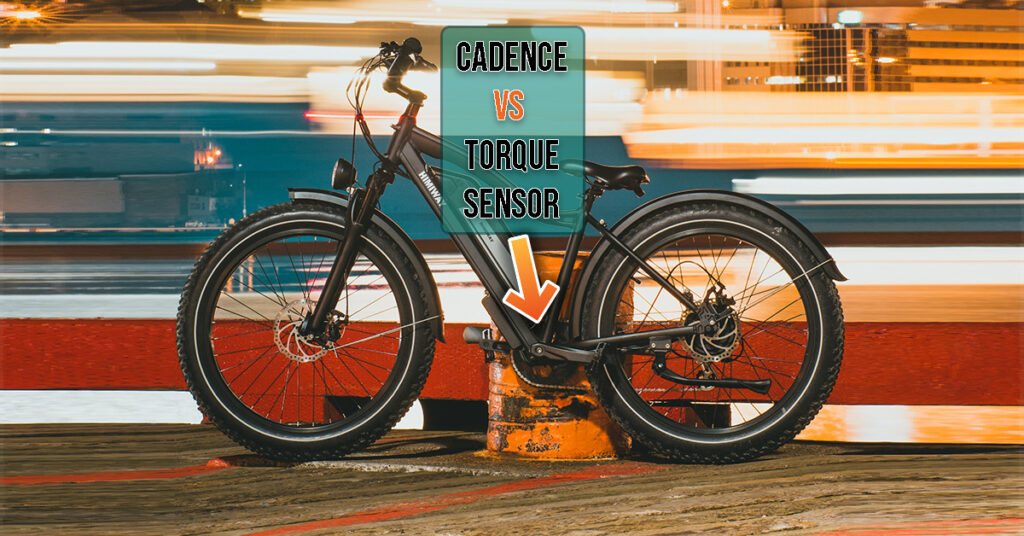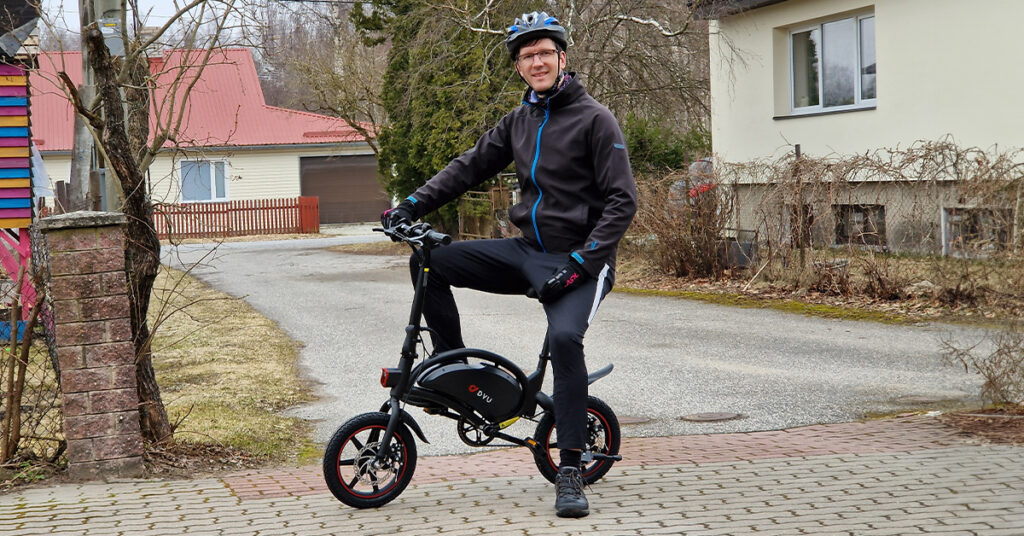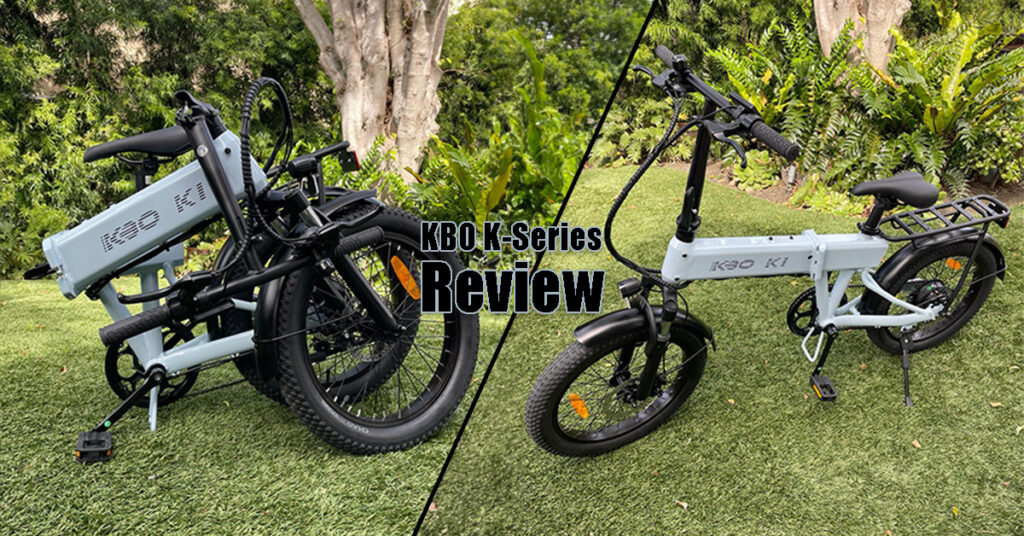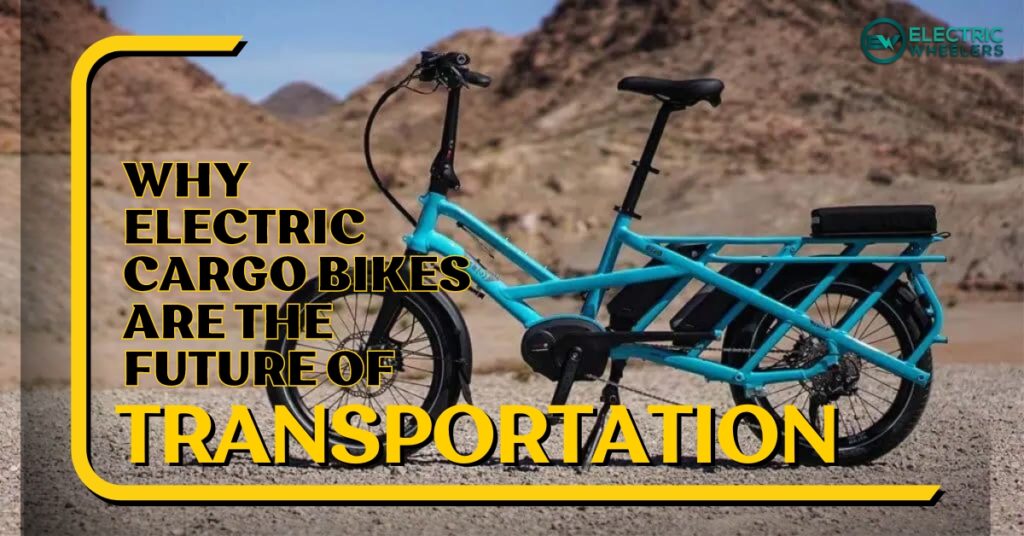When we wrote about how e-bikes work, we discovered that besides the motor and battery, one of the key features of an electric bike is its pedal-assist system (PAS). Every single e-bike has it.
There are two types of pedal-assist systems: cadence and torque sensors.
While both types of sensors provide assistance when pedaling, they work in different ways and have unique benefits and drawbacks.
In this blog post, we will explore the differences between cadence and torque sensors and discuss which one might be better suited for your e-bike needs.
What is a Cadence Sensor and How Does It Work?
A cadence sensor is basically a sensor that detects the movement of the pedals.
The sensor is usually located on the bottom bracket. But how does the sensor recognize the movement?
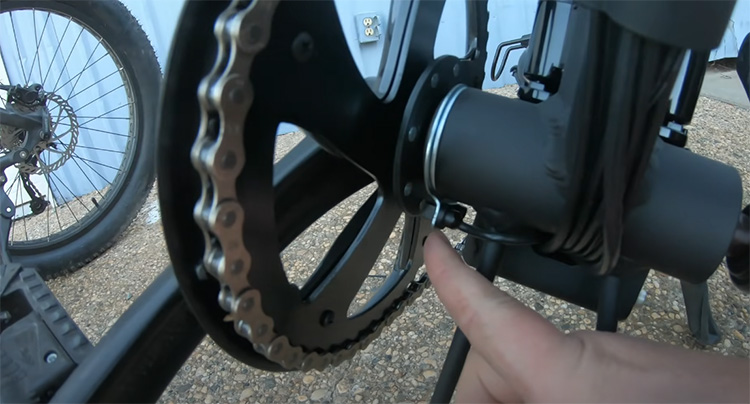
There are several magnets installed on the crank. The sensor is detecting when these magnets go by. If the sensor sees that the pedals are moving, it sends the signal to the motor, which will start working after that.
The cadence sensor is a very simple system. Basically, it’s a switch. If the pedals are moving, it’s on, and otherwise, it’s off.
The cadence sensor doesn’t regulate the amount of power the motor provides. Ebike motors usually have different speed modes.
If you have set the highest speed mode from the display, the motor gives you maximum assistance as soon as the cadence sensor detects the movement.
On the other hand, if you have set the lowest speed mode from the display, you can pedal as hard as you can, the motor doesn’t give you more power.
In short: the cadence sensor knows you are pedaling but it has no idea how hard you pedal.
With Cadence Sensor, You Can Ride a Bike While Ghost Pedaling
Ghost pedaling means that you barely pedal but can still move forward.
Since the cadence sensor doesn’t know how fast you pedal, you can just slowly keep the pedals moving but the bike can still go 28 mph.
Benefits of Cadence Sensor
Here is a list of the main benefits of cadence sensors:
- Cheaper – one of the key benefits of a cadence sensor is its relatively cheap price.
- Consistent power – the sensor works like an on/off switch. If it’s on, you don’t have to worry about the power of assistance.
- Ease of use – e-bikes with cadence sensor requires minimal effort from the rider. The cadence sensor doesn’t require pressure on the pedals in order to keep the bike moving. Therefore, e-bikes with cadence sensors are a good choice for seniors or people with mobility issues.
Disadvantages of Cadence Sensor
What are the cons of the cadence sensor?
- Feels less intuitive – because the sensor acts like a switch, the assistance of the motor isn’t gradual. After pedaling half of a round, it already gives you maximum power. It’s more similar to a motorcycle than a bicycle.
- There is a lag before the motor kicks in – you have to pedal at least half of a round before the cadence sensor recognizes the movement. Because of that, there is a short lag before the pedal assistance starts working.
- Requires minimal effort – this point is a bit controversial because we had it under the pros as well. But the problem is that if you barely have to pedal, you don’t get much physical activity.
In addition to these points already mentioned, check out the video below. This dangerous error can happen if the cadence sensor is dirty or dusty and it doesn’t realize that the pedals are no longer moving.
What is a Torque Sensor and How Does it Work?
A torque sensor is a sensor that detects the pressure on the cranks. The sensor is located inside the bottom bracket between the pedals.
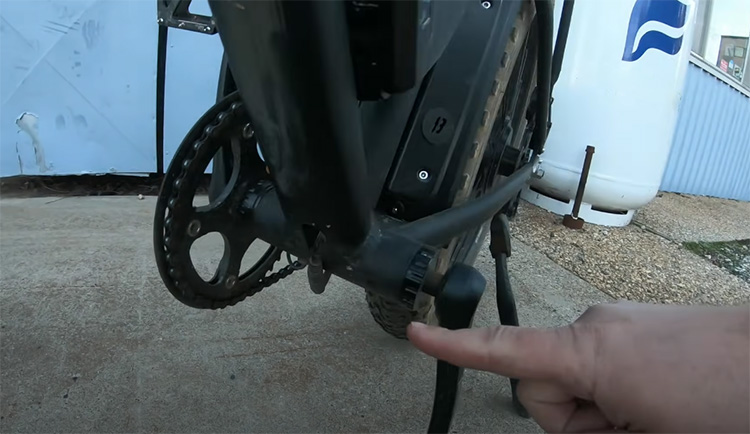
If the sensor feels the pressure, it sends the signal to the motor and tells it to give some assistance. Even if the pedals are not moving yet, the sensor detects pressure, and the motor activates.
Unlike the cadence sensor, the torque sensor knows exactly how hard you pedal. If you want the motor gives you more assistance, you must pedal harder.
Usually, e-bikes with torque sensors also have speed modes. But you must earn that additional power by pressing hard enough on the pedals.
So, the torque sensor is more natural. If you pedal slowly, the bike goes slowly. And if you pedal faster, the bike goes faster.
Benefits of Torque Sensor
Here are the main benefits of torque sensors:
- Feels more natural – since the torque sensor adjusts the amount of assistance the motor gives, riding feels more intuitive. If you pedal harder, the bike goes faster. It’s just like a traditional bike.
- Longer range – torque-based e-bikes don’t give you more assistance than you pedal. You always have to do some of the work. Therefore, the e-bike won’t overconsume energy and can provide a longer range.
- Requires more effort – although it’s an electric bike, you still have to do your part of the work. So you can still get a good amount of exercise while riding a torque-based e-bike.
Disadvantages of Torque Sensor
What are the cons of the torque sensor?
- More expensive – torque-based e-bikes are considerably more expensive than e-bikes with cadence sensors.
- Requires more effort – it’s a con for people who want an e-bike to get around more easily. You can’t just sit and relax and let the motor do the work.
- More difficult to reach top speed – while cadence-based e-bikes immediately accelerate to the top speed, torque-based e-bikes require you to put more work into pedaling for reaching the top speed.
Torque vs Cadence Sensor: Which One to Choose?
If you are about to buy an electric bike, we suggest you try and experience both systems. There is no right or wrong. It is really a personal preference.
There are people who like torque sensors more and there are people who like cadence sensors more.
Generally, people who have a strong background in cycling, usually prefer e-bikes with torque sensors. It’s simply because they are more natural and behave like regular bikes.
On the other hand, people who just want to get from point A to B more easily or ride longer distances, tend to prefer e-bikes with a cadence sensor.
Additionally, e-bikes with torque sensors are usually more expensive. If you don’t want to spend much, pick an e-bike with a cadence sensor.
Conclusion
By now you should have a clear idea about the differences between a cadence sensor and a torque sensor.
In this article, we explained what these sensors are and how they work. Additionally, we analyzed what are the pros and cons of these pedal-assist systems.
Ultimately, there is no answer to which is better: both have their own advantages and disadvantages. In the end, it’s your own personal preference that determines which one is best for you.
We hope that with the help of this article, it will be easier for you to find out your personal preference for pedal-assist sensors.

The founder and the editor-in-chief of the Electric Wheelers blog. With a previous background in IT, sales, and video editing, he has now established himself as a micromobility expert.
He bought his first e-scooter over 5 years ago and since then has owned dozens of e-scooters and e-bikes. His deep understanding of the technical aspects, coupled with a keen eye for market trends, enables him to provide insightful and reliable content.
His commitment to promoting sustainable and efficient urban mobility solutions has made him a respected voice in the community of eco-friendly transportation enthusiasts.

